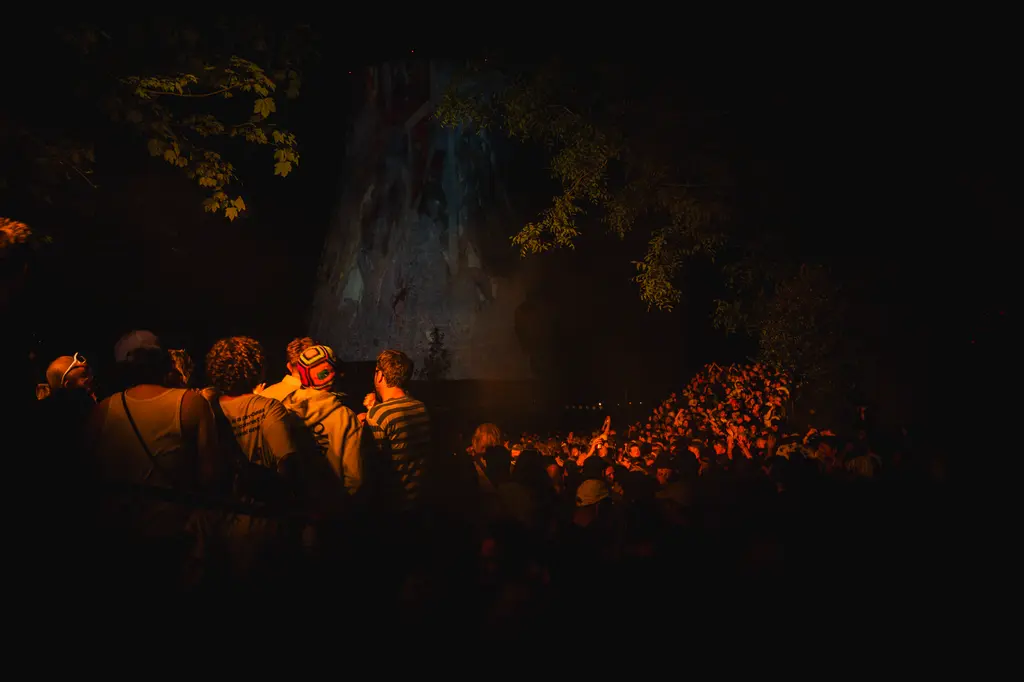Capturing hip hop’s biggest stars, before they were famous
- Text by Jesse Bernard
- Photography by Chi Modu

Once a photographer for The Source magazine, Chi Modu is responsible for some of the most widely celebrated shots in hip hop.
The Nigerian-American photographer helped build the identities of world-famous rappers when they were once unknown – shooting the likes of Nas, Biggie Smalls, Method Man, Snoop Dogg and 2Pac at the start of their careers.
“My work was always targeted,” he explains. “I would often follow someone around while they were on their way up.”


To be able to capture these artists in intimate moments, when they weren’t sure if anyone would even see the images, was special. 2Pac’s invitation to Chi to spend a few days with him in his Georgia home was an example of how the photographer’s warm personality allowed the world to see a different side to these artists – who, at the time, were routinely demonised by the conservative media.
“Hip-hop had been around for some years, but when The Source came in the late ’80s, it was one of the first publications to shine a light on it,” Chi remembers. “There were plenty of others that had a teen vibe to them, but this was one of the first to take a professional and editorial approach to the work.”
Chi has never believed in the idea of a “lucky shot”, as he feels that in order for it to be truly great, photographers need to know how they landed it. “People think it’s right place, right time,” he says, “but often it’s right place, right time, and right person, because it requires someone with a particular skill set who also has a personality young rulebreakers are comfortable being around.”
“It’s wild when the bad kids become the mainstream and are no longer outliers. I do miss the outlier thing a bit sometimes because it can be more authentic at times.”
The photographer isn’t someone who is overly nostalgic for rap’s heyday, nor does he dwell on those memorable moments he created with so many of the genre’s luminaries and trailblazers. He understands that the culture of hip hop is about looking forward. “I think what my work does for hip-hop today is that it gives people a reference,” he says. “When you look at the pictures, they look current because the energy in hip hop is always current. I’m not one of those OGs that sings praises of his time, it gets tired after a while. You don’t have to scream the praises of your era if the work holds up.”
The excitement that surrounded rap in the early ’90s – which saw it embraced and revered by the global masses – remains present in the images today. By consistently capturing hip-hop artists in intimate moments, Modu was more than just the right man for the job, too: he understood that there were human stories behind the rap stardom, making him completely ahead of his time.







Follow Jesse Bernard on Twitter.
Enjoyed this article? Like Huck on Facebook or follow us on Twitter.
You might like

On Alexander Skarsgård’s trousers, The Rehearsal, and the importance of weirdos
Freaks and Finances — In the May edition of our monthly culture newsletter, columnist Emma Garland reflects on the Swedish actor’s Cannes look, Nathan Fielder’s wild ambition, and Jafaican.
Written by: Emma Garland

Huck teams up with Eastern Margins for a special SXSW London showcase
From Shibuya to Shoreditch — Taking place at Village Underground on Monday, performances will come from MONO, Nina Utashiro, Ena Mori, Jianbo, LVRA & Soda Plains.
Written by: Isaac Muk

Analogue Appreciation: Shura
I Got Too Sad For My Friends — In an ever more digital, online world, we ask our favourite artists about their most cherished pieces of physical culture. Today, it’s English singer-songwriter Shura.
Written by: Shura

At Belgium’s Horst, electronic music, skate and community collide
More than a festival — With art exhibitions, youth projects and a brand new skatepark, the Vilvoorde-Brussels weekender is demonstrating how music events can have an impact all year round.
Written by: Isaac Muk

Block9 reveals its Glastonbury Festival 2025 plans
Party and protest — The nightlife hub will feature a bigger-than-ever Saturday daytime block party across The NYC Downlow and Genosys, and a huge collaboration with artist-activist group Led By Donkeys.
Written by: Isaac Muk

We are all Mia Khalifa
How humour, therapy and community help Huck's latest cover star control her narrative.
Written by: Alya Mooro